The sun heats, the time of holidays is approaching, which means that it's time to take care of the beauty of your heels so that you can show beautiful legs without embarrassment. Alas, not all girls followed the skin properly, and now it is coarsened, began to peel off, covered with cracks. .. Well, how can you show such "beauty"?No time or money to run to the salon to do a pedicure? No problem! Try a simple and affordable tool - glycerin for heels. It is worth a penny, and by effect surpasses many expensive procedures.
Masks, baths, wraps with glycerin will quickly make the heels soft, smooth, eliminate cracks, peeling. Moreover, the feeling of constant discomfort associated with these problems will disappear, and groomed feet will make their owner self-confident.
What a miracle tool?
Regular use of glycerin will return the heels and skin of the foot with elasticity, smoothness, softness. No, this is not a myth, even such a cheap money can be miraculous. It can be used both for treatment and for preventing the appearance of cracks, coarse skin on the heels.
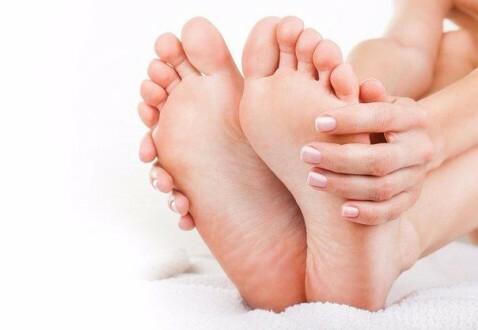
Glycerin has a rare feature: it absorbs water molecules from the air. Painted on dry or cracked skin, it seems to attract, absorb moisture from the environment, giving it to the damaged area.
In addition to moisturizing effect, glycerol has a number of other properties:
- It antiseptic, prevents the reproduction of harmful bacteria, microorganisms.
- Ranks, cracks quickly heal, the skin becomes softer, so for heels glycerin is just real salvation.
- Softens the upper layer of horny skin, it is easier to remove.
- Cracks and corns are formed much more slowly, the skin dries much less.
When using glycerin for heels, it is important to make sure that it is made from natural raw materials. An artificially produced drug costs less, but is of poor quality, and can also cause an allergic reaction. When you purchase, check with the pharmacist.
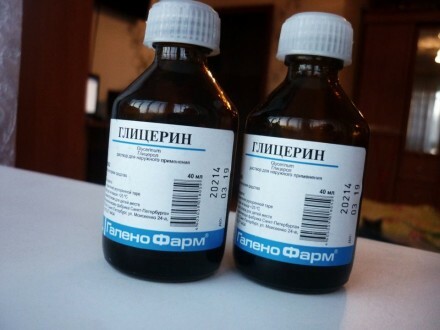 In addition, glycerin should have a high percentage of purification - from 99.5%.This also affects the effectiveness of the drug.
In addition, glycerin should have a high percentage of purification - from 99.5%.This also affects the effectiveness of the drug.
How to use?
Glycerin is used to treat the skin on the heels in the form of foot baths or masks, including warm wraps. After one procedure, the effect will be noticeable, but the course must be continued until the signs of the damaged skin disappear completely.
Regularity matters, usually 4-5 days of drug use is sufficient. In the future it will be possible to apply once every 1-2 weeks a suitable remedy to prevent the appearance of cracks, coarsened skin.
In its pure form, glycerin is not recommended to apply, it can dry up even more, so prescription medicines often contain other components:
- Vinegar.
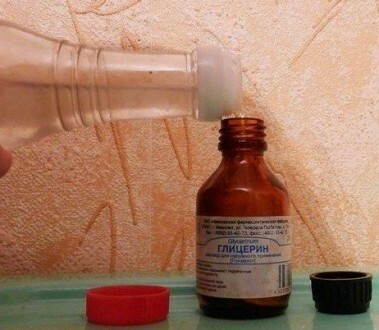
- Ammonia.
- Lemon juice.
- Essential oils.
- Flesh of the fruit.
- Honey et al
Masks
Glycerin masks for heels are recommended to be applied after thorough preparation of the feet:
- It is necessary to steam them off by holding at least 15 minutes in hot water with the addition of sea salt( 1 tablespoon per 1 liter) or medicinal herb infusions.
- Coarsely ground areas should be treated with pumice or a grater, you need to massage carefully. For greater effect, a scrub should be applied to the feet.
- Wipe your feet dry with a towel.
Only after these steps can you start applying masks with glycerin, especially effective against cracks on the heels.
Glycerin with vinegar
For the treatment of heels, the most effective mask is glycerin and vinegar.
- Do it, mixing in equal proportions glycerin and vinegar( 9%), count individually, most often a couple of tablespoons is enough.
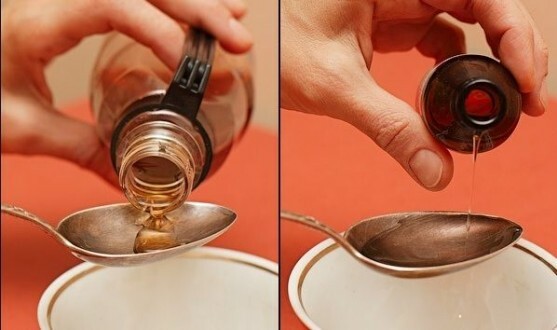
- The resulting mixture should be spread over the heels, as well as other coarsened areas of the foot. Top with a tightly wrapped food film, put on warm( you can woolen) socks.
- Keep this mask for at least 3 hours, you can leave it overnight. After this time, rinse with warm water, dry your feet with a soft towel.
Another way to use the same composition is applying the heels to dry skin( for 20 minutes), followed by treatment with pumice soaked in warm water.
The peculiarity of vinegar is that it:
- Effectively fights against fungus. Instead of table vinegar, you can use apple.
- Prevents excessive drying of the skin.
- Softens even heavily coarsened areas.
Treatment of cracks on heels with glycerin and vinegar - video
From cracks
Even the deepest cracks can be cured with glycerol and vinegar. The recipe is extremely simple:
- Buy a bottle of glycerin in the pharmacy.
- Pour apple vinegar essence to the top.
- The resulting solution should be rubbed twice a day into cracked skin.
- The procedure should be repeated until the cracks disappear completely, despite the fact that after a few applications the proper effect will appear.
In addition to rubbing, the same solution can be used as a mask, applying it not more than once a month to damaged areas, after which you put on cotton and warm socks. Keep the best all night, the next morning the skin will become noticeably more smooth, moisturized.
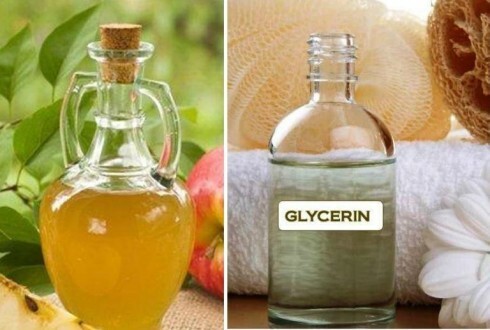
Glycerin with ammonia
A mixture of glycerin and ammonia is no less effective for treating heels. With the help of these products, the skin will become more smooth, pink, soft. Glycerin softens well the coarsened skin, and ammonia tightens the cracks.
- Mask can be made by mixing in equal parts ammonia 10% with glycerin( on a bubble).
- Legs should be steamed in a salt or soda bath for about 20 minutes, carefully treated with pumice feet, dry your feet dry.
- Mixture of glycerin with ammonia shake, apply on the entire foot, paying special attention to coarse patches on the heels. To wind feet with food film or plastic bag, from above to insulate with dense socks. Keep at least 30 minutes, the longer, the better.
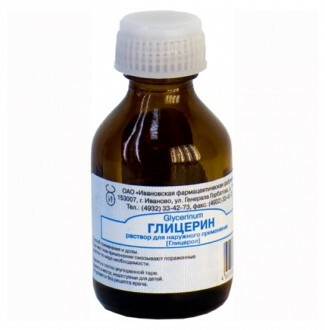
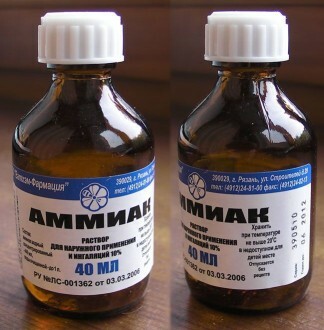
In the mask for additional softening of the skin on the heels, it is recommended to add a few drops of vitamins A and E( or Aevit).Also, ammonia can be mixed not with pure glycerin, but diluted in equal parts with olive oil.
If you make such a mask at night, you can get rid of deep cracks. In this case, in the morning, it is necessary to wash off the composition, gently cut off the much exfoliated skin. Repeat the procedure until the cracks disappear completely.
A mixture of glycerol with ammonia can be used to massage the coarsened skin of the feet. You need to do this twice a day - in the morning and in the evening.
Fruit mask
Softens the coarse skin mask based on glycerin and the pulp of any sour fruit.
- Glycerin
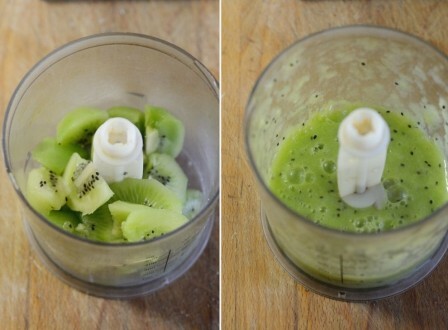 should be diluted 1: 2 with water, add pulped pulp of kiwi, grapefruit or a green apple, as well as a few drops of lemon juice.
should be diluted 1: 2 with water, add pulped pulp of kiwi, grapefruit or a green apple, as well as a few drops of lemon juice. - Blend the mixture on the heels after steaming, leave for 15-20 minutes, wrapping the feet with food film.
Honey mask
Moisturizes, nourishes, softens rough skin on the heels of a glycerin mask with honey.
- For its preparation, mix a teaspoon of honey, glycerin and any cosmetic oil, for example, apricot kernels.
- In the mixture, pour a tablespoon of warm water, mix, apply on all the feet.
- Wrap the food film, put on dense socks made of cotton, leave overnight.
Foot baths
Glycerin foot baths are recommended as prevention of cracking, softening of coarse skin. Doing them best is not in neglected cases. In the presence of deep cracks, it is recommended to first take a course of masks, this is due to the fact that the baths are accompanied by an active massage with exfoliation( using pumice stone), which can damage the cracked skin.
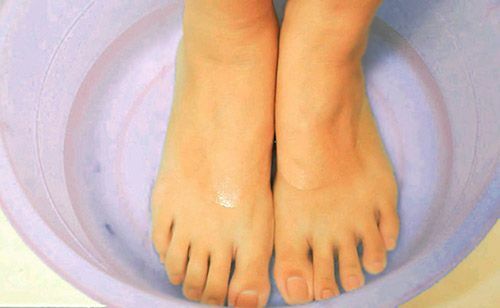
The simplest bath:
- 1 teaspoon of glycerin per liter of water( warm).
- Dip stops in solution for 15 minutes.
- After that, treat them with pumice stone, if desired, applying a skin scrub.
Well soothes the soap tray:
- 2-3 liters of warm water should take a couple of tablespoons of soap, glycerin( 1 tbsp.), Squeeze out juice from half a lemon. The duration of the procedure is 20 minutes.
- In the end, you should massage your feet with a scrub of lemon juice with sea salt, treating the problem areas with pumice stone or a float.
- After the procedure, rinse your feet with warm water, wipe it, apply glycerin diluted with water, and massage your heels actively. Wear cotton socks and leave overnight.
You can add any essential oils to the glycerol 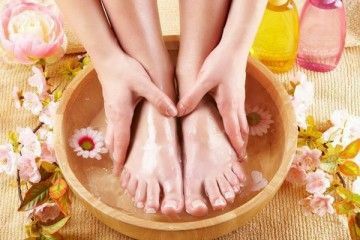 bath, for example, lavender or pink, as well as cosmetic( olive, almond, peach, corn), honey, milk.
bath, for example, lavender or pink, as well as cosmetic( olive, almond, peach, corn), honey, milk.
This will enhance the effect of the procedure, and the heels will become tender and smooth, like the baby's.
Regularity of using glycerol for heels
All individually, although the effect of glycerin is visible almost immediately. To eliminate obvious signs, 2-3 procedures are sufficient, but for a sustainable effect, appropriate formulations should be applied until all skin lesions disappear completely.
It is important not to miss procedures, regularity affects efficiency. To fix the result glycerin masks or baths can be used 1-2 times a month.
Related Videos:
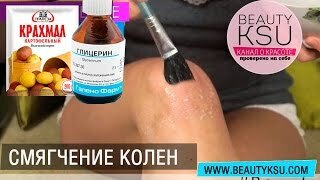 2:10
2:10 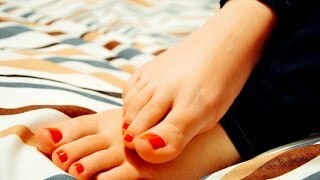 2:04
2:04 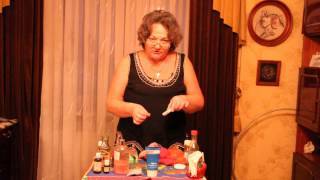 9:11
9:11 